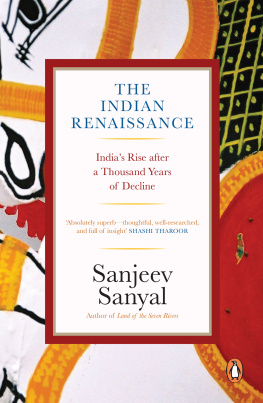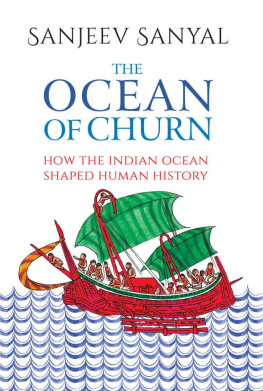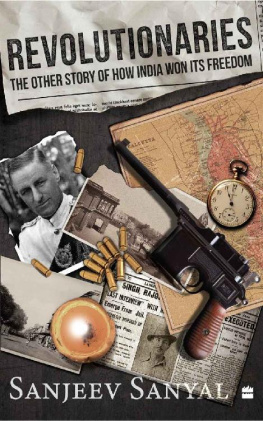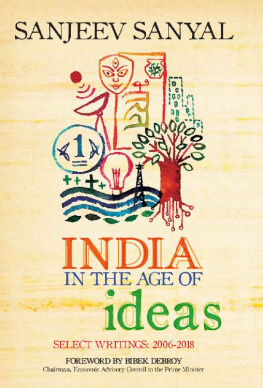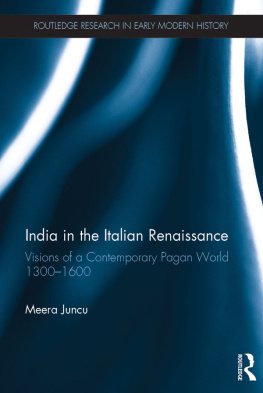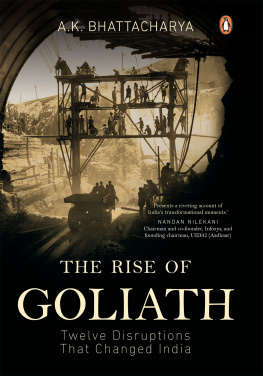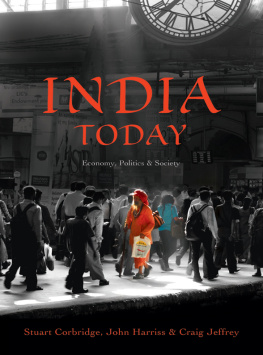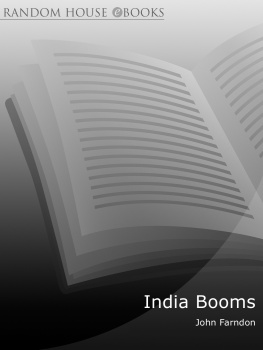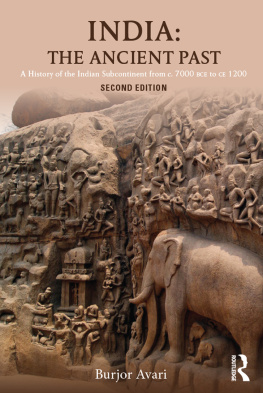Currently the global strategist of one of the worlds largest banks, Sanjeev Sanyal divides his time between India and Singapore. A Rhodes Scholar and an Eisenhower Fellow, he was named Young Global Leader for 2010 by the World Economic Forum. He has written extensively on economics, environmental conservation and urban issues.
1
Waiting for a Thousand Years
When future generations of Indian school-children read history, they will be made to memorize two important dates from the twentieth century1947 and 1991. The importance of the first is obvious. It was the year when India gained independence from Britain, a colonial power that had dominated the country since the eighteenth century. Despite the bitterness of the subcontinents partition into Muslim-majority Pakistan and Hindu-majority India, the year 1947 was undoubtedly an important turning point in the countrys history.
What of 1991? It was the year that India decided to liberalize its economy, but can it be said to be a turning point comparable to 1947? For almost half a century, the country had been held down by self-imposed constraints that had hampered economic development and stunted its international stature. Liberalization has clearly unleashed the countrys economic potential. However, the shift in 1991 was not just about changing economic policies but about gaining freedom from a cultural attitude embodied in the old inward-looking economic regime. The regime is usually associated with Jawaharlal Nehru, Indias first Prime Minister, and his advisor Mahalanobis. However, the Nehruvian Vision was only the latest manifestation of an inward-looking cultural attitude that had held down the Indian civilization for almost a millenniumfar longer than foreign conquerors.
India has a long and proud history. However, during its golden age, prior to the eleventh century, it was a country that encouraged innovation and change. Indian society celebrated its risk-takers. It was open to foreign trade, ideas and immigrants. Foreign students flocked to its universities even as foreign merchants flocked to its ports. Yet a change in cultural attitudes by the eleventh century created a fossilized society obsessed with regulating all aspects of life according to fixed rules. Not surprisingly, this discouraged the spirit of innovation and led to a long and painful decline. India fell behind not just as an economy but as a civilization.
The year 1991 marks the turning point when India was forced to open itself out to the world. The opening was not limited to the economy but to all aspects of life, and the process was sped up by the fact that it coincided with the communications revolutioncable television, mobile telephones, and the internet. This book argues that the long-term impact of this on India will be similar to what was witnessed in Western Europe following the Renaissance.
Of course, the process of change did not begin suddenly in 1991. It has its roots in early nineteenth-century Bengal. Thanks to Raja Ram Mohan Roy and his fellow reformers, the country witnessed important social reforms as well as the introduction of the English language. The process gradually spread through the country till the middle of the twentieth century. Independence from colonization should have accelerated the process but unfortunately it led to a reversion to isolationism. Instead of catching up with the world, the country fell even further behind.
It was only with the opening of India in the nineteen-nineties that the country has seen a renaissance both as an economy and as a civilization. The efforts of the nineteenth-century reformers had prepared India for the flood of ideas. Moreover, the country also now had a large and successful global diaspora that provided the country with international linkages that it had not enjoyed since the days of the ancient spice trade. Within a few years, there was a major shift in Indias cultural attitude to change. In this sense, the year 1991 has the same importance in Indian history as the Meiji Restoration had in Japanese history when instead of whining about the rest of the world, Indians began to believe in themselves again.
This book is about how India has finally become free, and how it has the opportunity now of transforming itself and the world. There are many hurdles on the waythe poor state of the institutions of governance, the quality of tertiary education and so on. However, there are also strong forces that will support Indias transformation. Demographic change and a primary education revolution are unleashing the same dynamics that have already transformed the rest of Asia. A middle class is emerging that will soon demand major institutional and political change. Indias rise is not predestined but, for the first time in a millennium, it looks like it has the courage to exploit the window of opportunity.
This book largely deals with Indias economic resurgence. However, throughout the book, we will be mindful that economic resurgence is only part of a wider civilizational reawakening. An open cultural attitude is perhaps the single most important condition for an Indian renaissancefar more important and long lasting than demographic shifts and rising savings rates. Both the rise of Europe following the Renaissance and the revival of Japan after the Meiji Restoration predated their demographic shifts. Rising savings rates and literacy rates were important to the extent that they accelerated the pace at which new ideas and technologies were disseminated and absorbed. By themselves, labour and capital are not sufficient. The experience of the communist bloc during the course of the twentieth century clearly shows the limitations of generating growth by deploying capital and labour without an open cultural system. In the end, these societies simply could not deal with change despite their ability to generate complex new technologies. It is the same reason that the NehruMahalanobis attempt to modernize India through the public sector was doomed to failure even if it had survived to see the demographic and literacy shifts.
These days it is commonplace to hear talk about how India is emerging as a great economic superpower and how, together with China, it is reshaping the world production system. The next two chapters look back at the sequence of events that brought India to this juncture. In subsequent chapters, we look at the emerging forces of demographic change, urbanization, growing middle-class and rising literacy levels. We also look at the major hurdles that India needs to cross and the risks that it must face. Finally, we will speculate on how India will change in the twenty-first century.

